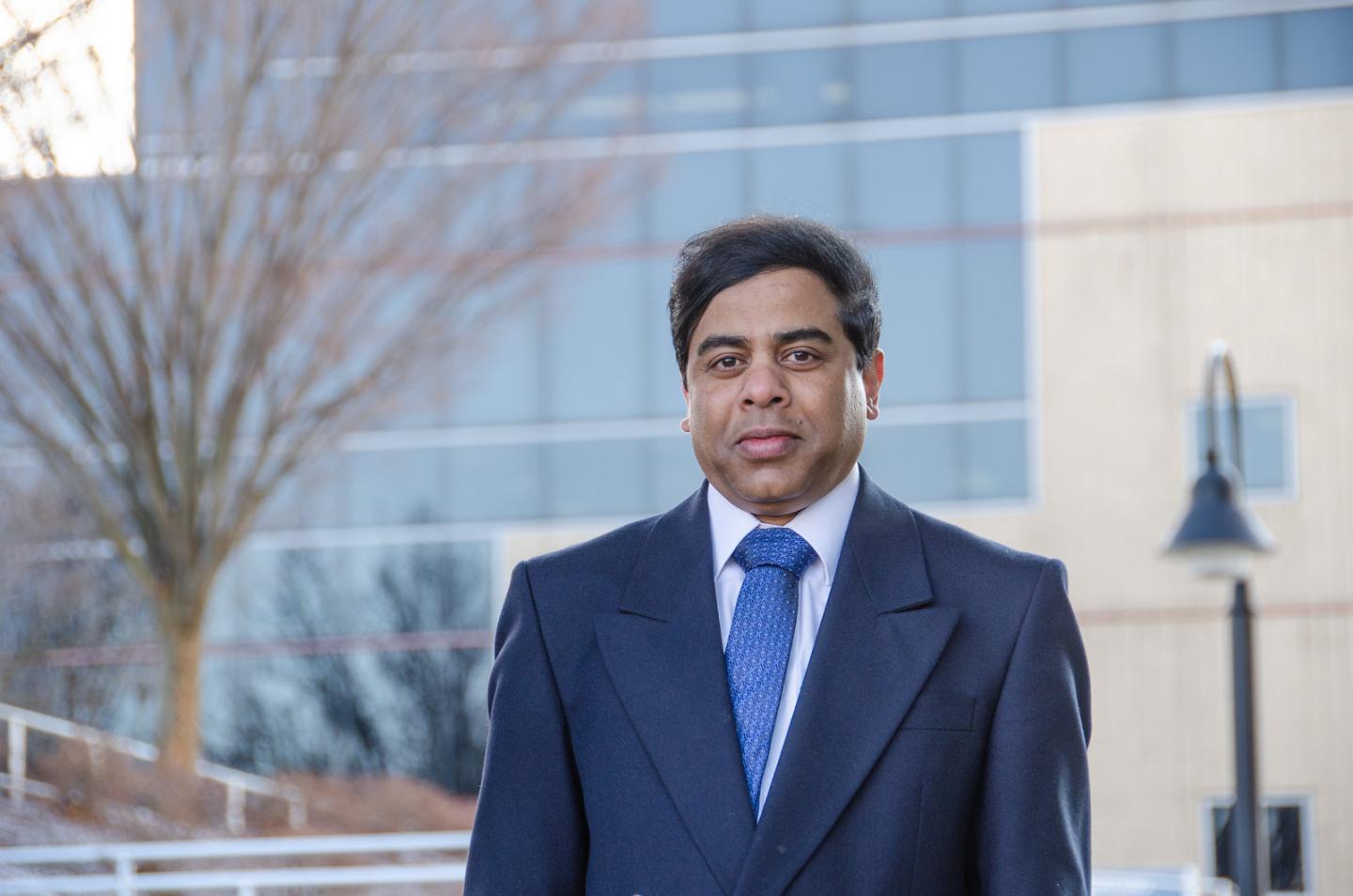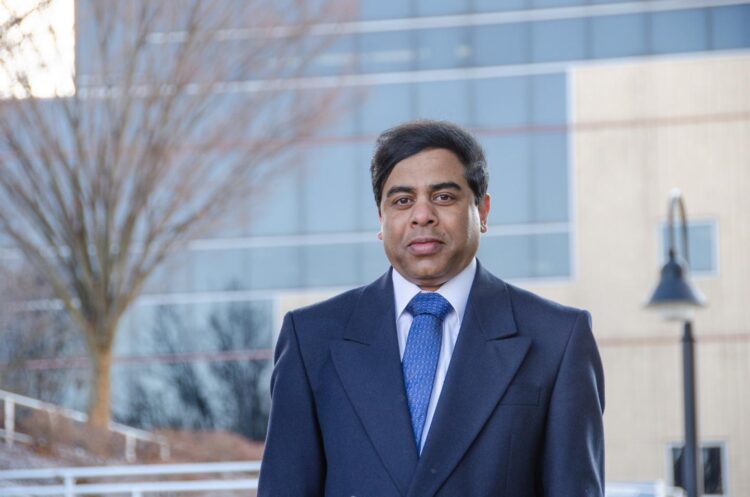
Credit: Paige Nesbit/WVU
One silver lining to COVID-19 restrictions, based on a recent report, is a 2.4 billion-ton plummet in global carbon emissions. Yet worldwide carbon output remains astronomical – 34 billion tons – and experts project an uptick in 2021.
Debangsu Bhattacharyya, GE Plastics Professor of chemical and biomedical engineering in the Benjamin M. Statler College of Engineering and Mineral Resources at West Virginia University, hopes to play a hand in quelling any future surges as he’s earned $650,000 in U.S. Department of Energy funding spread over four carbon capture-related projects.
Bhattacharyya, who recently won his third R&D 100 Award for addressing the nation’s need for clean energy, plans to use advanced mathematical models and large-scale dynamic optimization algorithms to inch the country closer to net zero emissions.
He realizes it’s a tall order. Large-scale, efficient carbon capture has seemingly been entrenched in decades and decades of testing and development, short of a silver bullet.
“The technology we’ve typically seen developed at the lab scale takes 20 to 40 years before it sees the light of day, if at all,” Bhattacharyya said about carbon capture technology, which is aimed at keeping carbon dioxide emissions, particularly from fossil fuels, from permeating the atmosphere.
“Most of these technologies somewhere along the way will die a graceful death. The problem is that you realize that the technology cannot be commercial after you expand many, many millions of dollars and years into it.”
Bhattacharyya believes advanced mathematical models can accelerate the development of commercial CO2 capture technologies by detangling the complex mechanisms of the novel CO2 capture processes.
For his four Department of Energy-sponsored projects, Bhattacharyya will collaborate with top research universities across the country as well as the private sector to address these challenges.
“The overarching objective of these projects is to develop advanced post-combustion CO2 capture and compression technologies that are cost-optimal, and highly agile for a carbon-constrained world in presence of intermittent energy integration to the grid,” he said.
Leaning in
In coal-fired power plants, fossil fuel is combusted to produce CO2 and water. For capturing CO2 from the flue gas, the most matured technology is amine scrubbing. In amine systems, hydrogen sulfide and carbon dioxide are removed from fuel gases to prevent air pollution. A drawback to this process is that the solvent needs to be heated for releasing the captured CO2 from the aqueous amine solvent. Parasitic heat loss occurs not only for breaking the strong chemical bond, Bhattacharyya said, but also for evaporation of water in large volumes. This high energy penalty is one of the roadblocks for large-scale deployment of these technologies.
One solution relies on the use of water-lean solvents that possess low or no water content. “These solvents can decrease energy penalty by 40% compared to primary amines,” Bhattacharyya said.
In the first of Bhattacharyya’s projects, he will work with RTI International, Pacific Northwest National Lab, Electric Power Research Institute and the National Energy Technology Laboratory to develop carbon capture technology for power plants using these water-lean solvents.
A second project looks beyond your traditional fossil fuel-fired power plant. “Natural Gas/Direct Air Capture Hybrid Plant” is a collaboration with the University of Pittsburgh, University of Toledo and Aristosys LLC.
“Other than the large-scale point sources for CO2 like power plants, CO2 is also produced in small quantities by cars, trucks, aircrafts, ships, various types of engines, etc.,” Bhattacharyya said. “These sources are distributed where emissions directly get released into the atmosphere. The direct air capture (DAC) technologies attempts to capture CO2 directly from the air. Due to the large volume of air that needs to be processed and due to low concentration of CO2 in the atmosphere, innovation of new technologies is absolutely critical for DAC.”
The third project partners Bhattacharyya with chemical company Linde Gas North America, which plans to develop a system for natural gas-fired power plants using post-combustion carbon capture synergistically integrated with hydrogen technologies.
Large power plants often experience frequent starts and stops, contributing to higher carbon emissions during ramp-ups and ramp-downs than their nominal operation. Researchers hope to integrate an electrolyzer, which uses electricity to break water into hydrogen and oxygen, that could enable plants to operate under more steady conditions. Power produced by hydrogen combustion is clean thus aiding to carbon mitigation.
The last of these projects teams Bhattacharyya up with private technology company Susteon, Inc. and NETL to evaluate a carbon capture technology based on a novel next-generation functionalized metal organic framework.
“This novel technology can rapidly respond to changing carbon capture demands maintaining near-zero emission of CO2 even under very fast load-following operation of the host power plant,” Bhattacharyya said.
“Development of the proposed technologies will be an important step towards a carbon-neutral world,” he said. “WVU’s contribution in these projects through rigorous, first- principles-based dynamic modeling, dynamic reduced order modeling and large-scale, stochastic dynamic optimization are key enablers to realize the potential of the proposed technologies.”
###
Media Contact
Jake Stump, Director of Research Communications
[email protected]
Original Source
https:/





